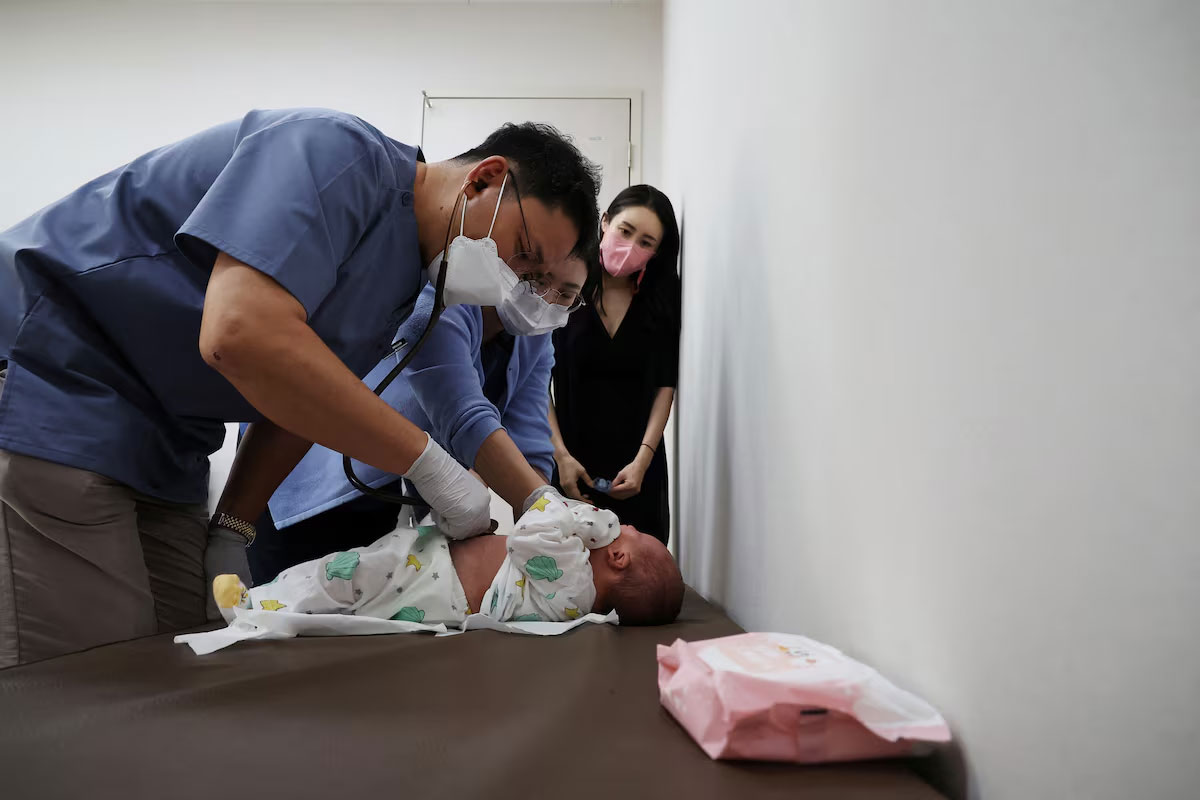New Warning about World Population
A recent study published in Lancet has issued a warning about the global population until the year 2100. The study predicts that the population of 198 out of 204 countries and territories will decrease, with the majority of births occurring in poor countries.
Specifically, for every 2 children born worldwide in 2100, one will come from the Sub-Saharan Africa region. Countries such as Somalia, Tonga, Niger, Chad, Samoa, and Tajikistan are expected to maintain their population levels.
The study also highlights a concerning trend for countries with declining fertility rates, as they will face challenges related to a shortage of the labor force.

Caption: A doctor caring for a baby at a pediatric clinic in Seoul, South Korea. Photo: REUTERS
According to Natalia Bhattacharjee, an expert from the Institute for Health Metrics and Evaluation (IHME), the impact of this population scenario is significant and has the potential to “reshape the global economy and the balance of international power.”
While wealthy nations struggle to maintain economic growth, poor nations must grapple with the challenge of supporting a booming population in areas with unstable economies and politics, extreme heat, and underdeveloped healthcare systems.
Addressing challenges related to migration and global aid will become increasingly urgent as wealthy nations compete for immigrant labor while the population in the Sub-Saharan Africa region continues to explode.
Austin Schumacher, another IHME expert, states that managing the risks associated with population growth is a major challenge for the Sub-Saharan Africa region, particularly for countries with the highest birth rates. Without solutions, this region faces the risk of humanitarian disasters.
Schumacher emphasizes that in order to tackle these challenges, the Sub-Saharan Africa region needs to be prioritized in efforts to mitigate the impact of climate change, improve healthcare infrastructure, reduce child mortality, combat poverty, and provide education for girls.
Source: Business Today
